GERALD COLLINGS . First Loves
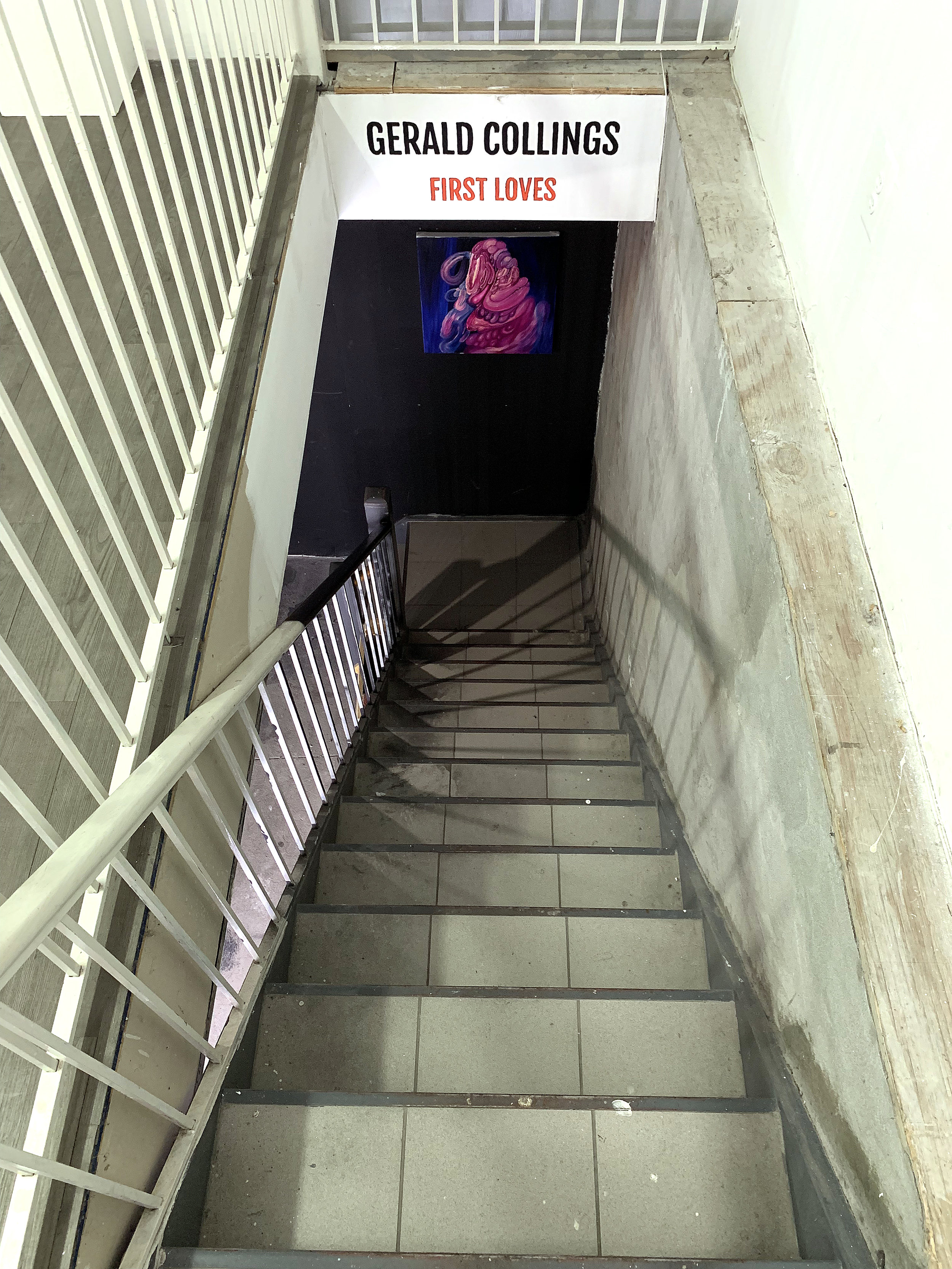
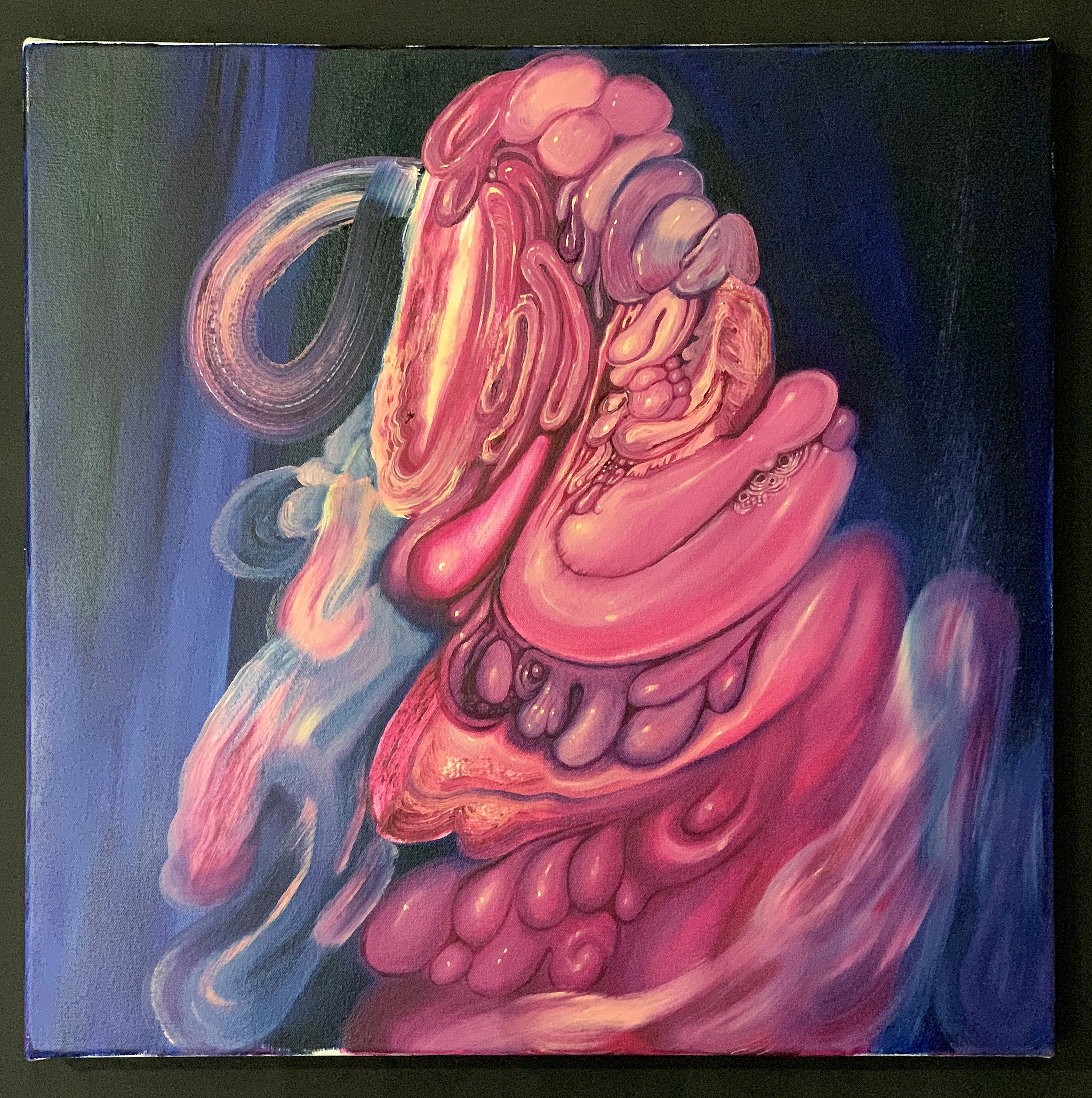
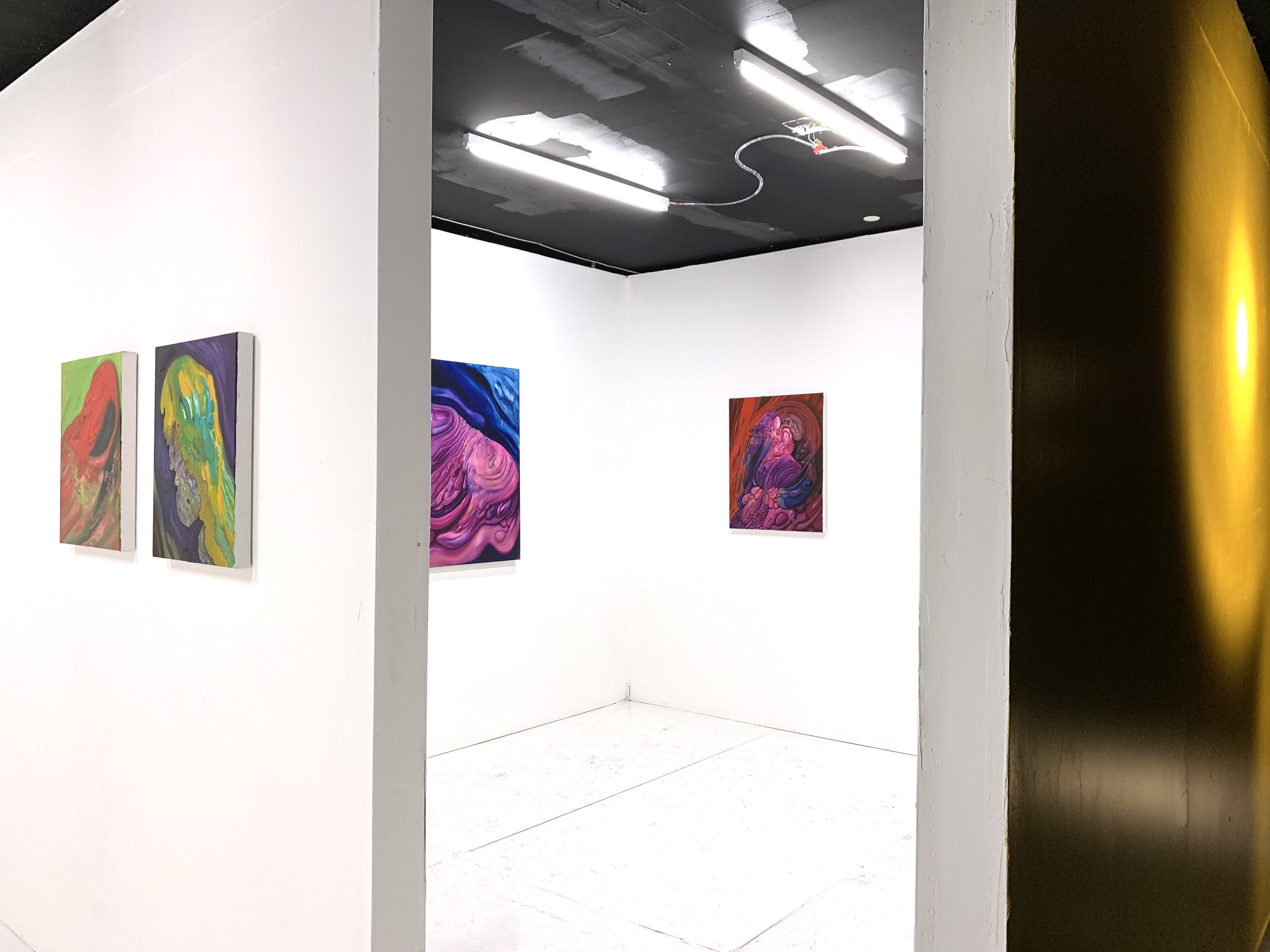
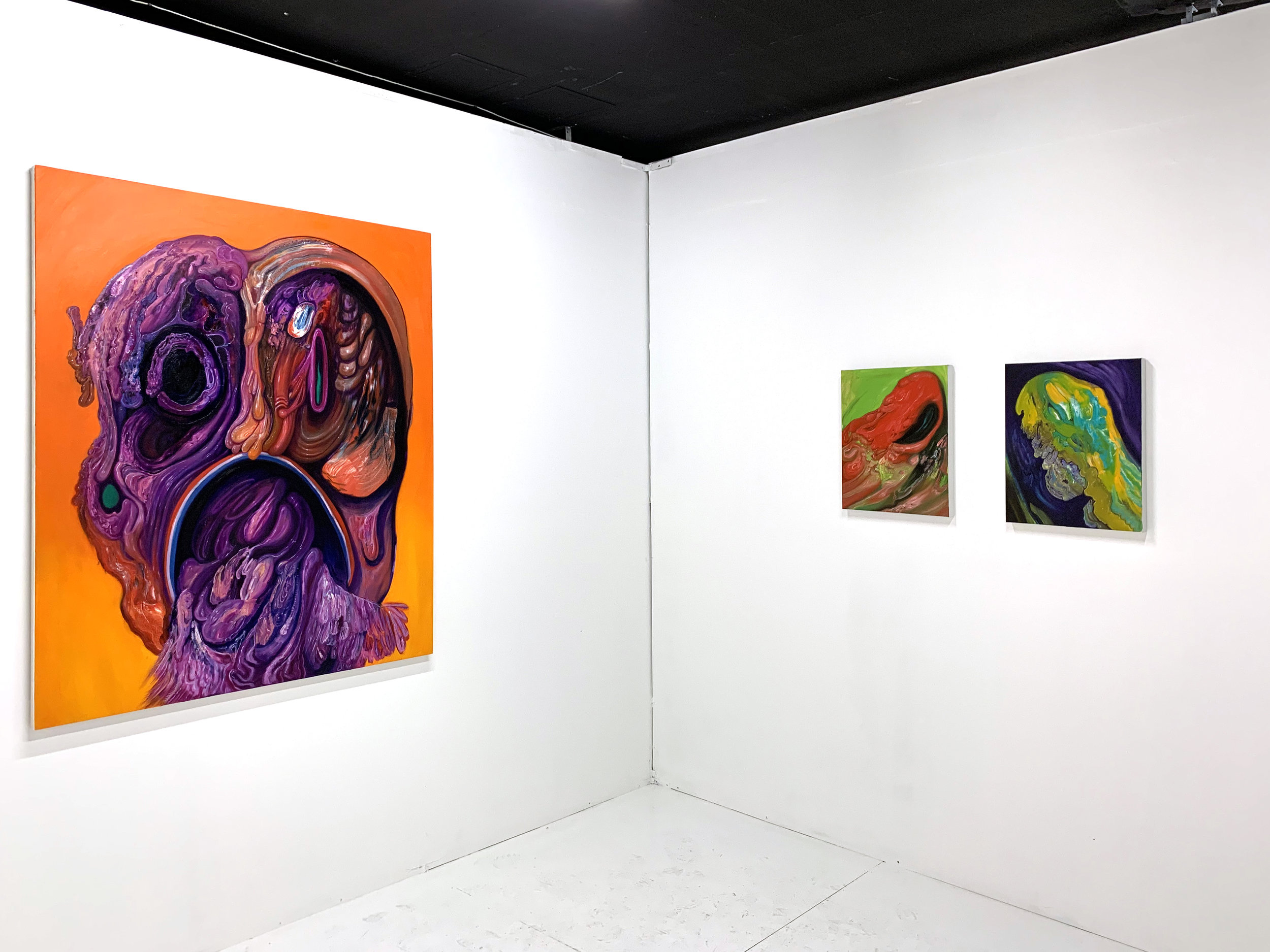
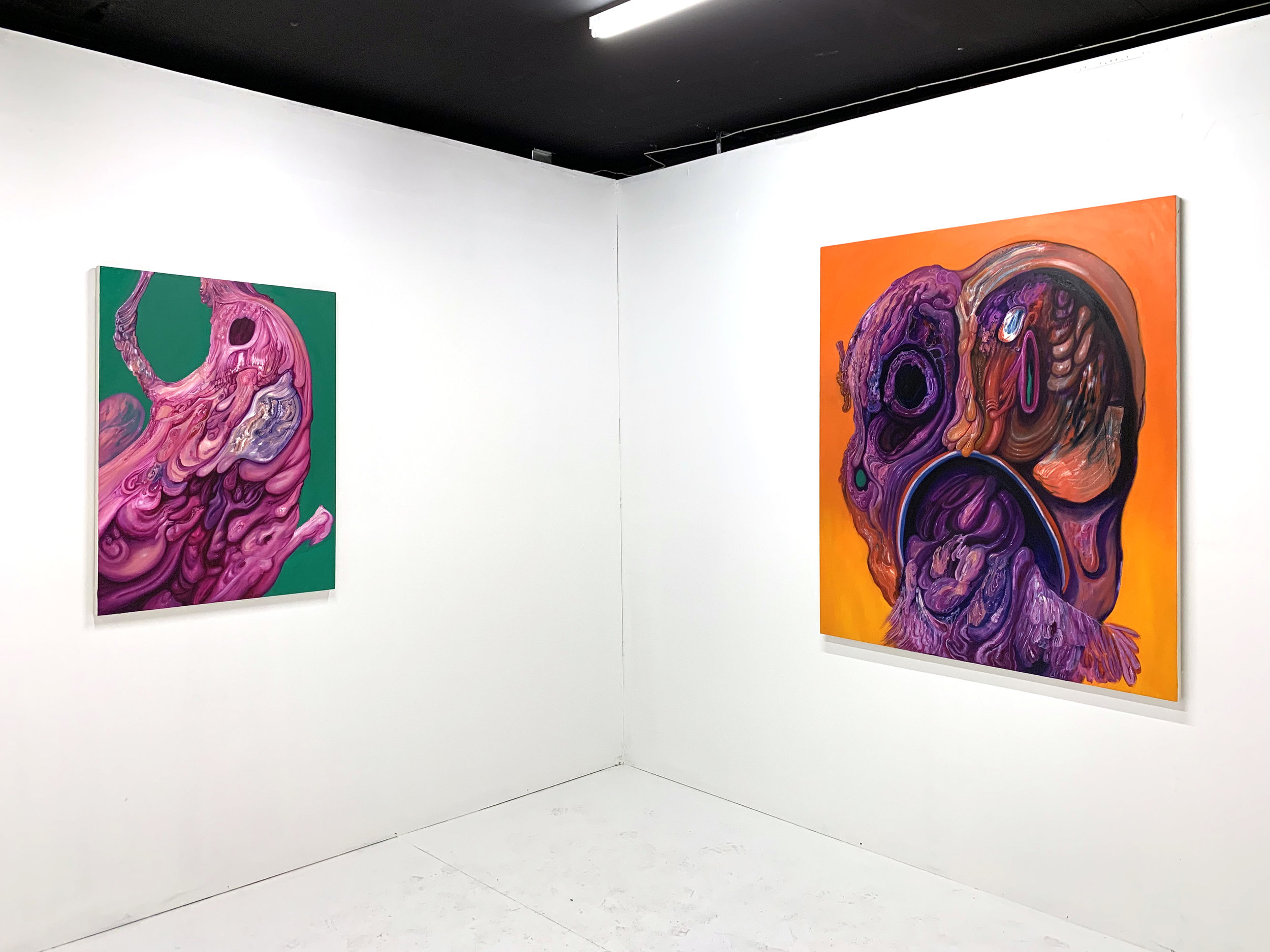
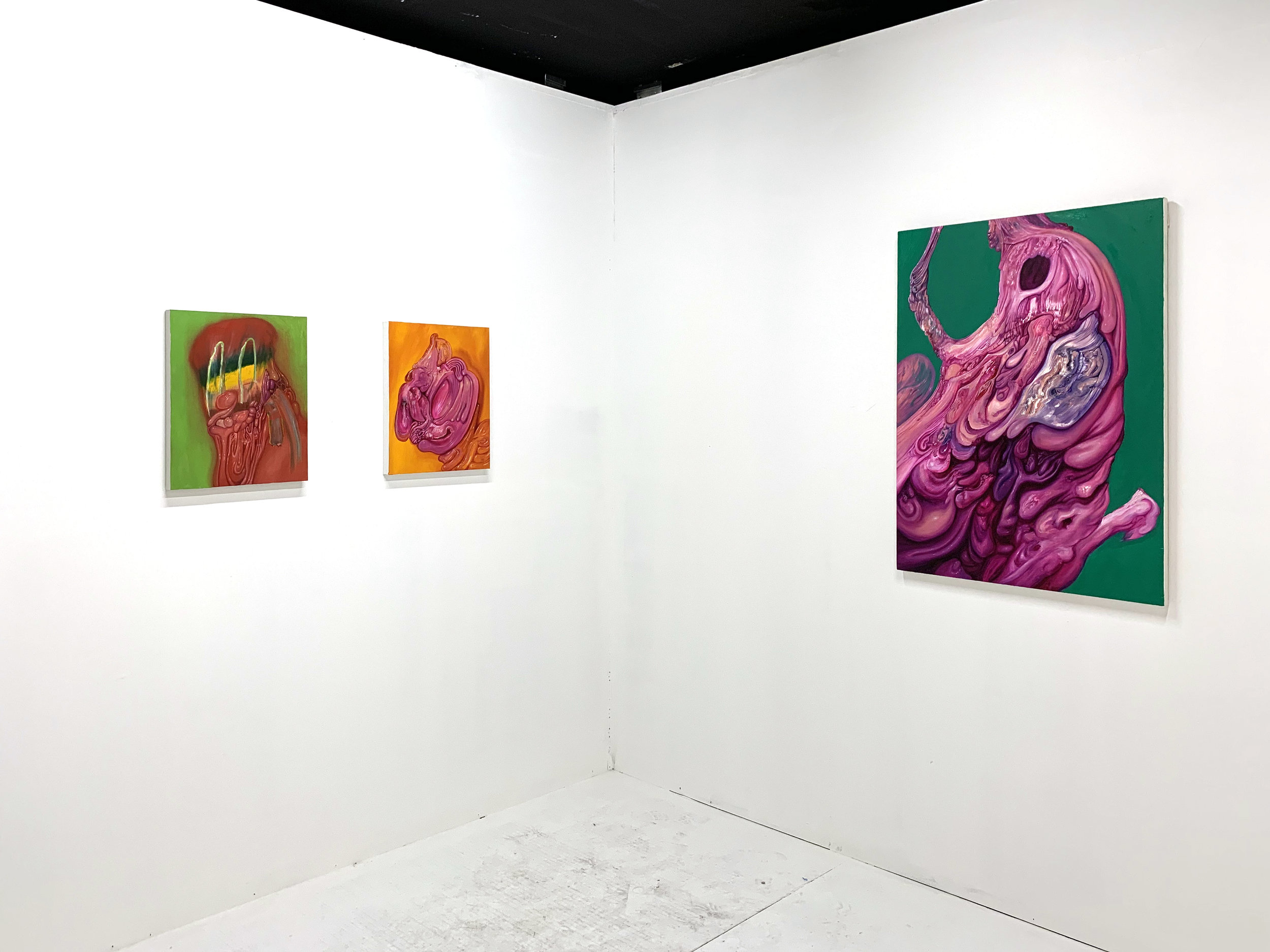
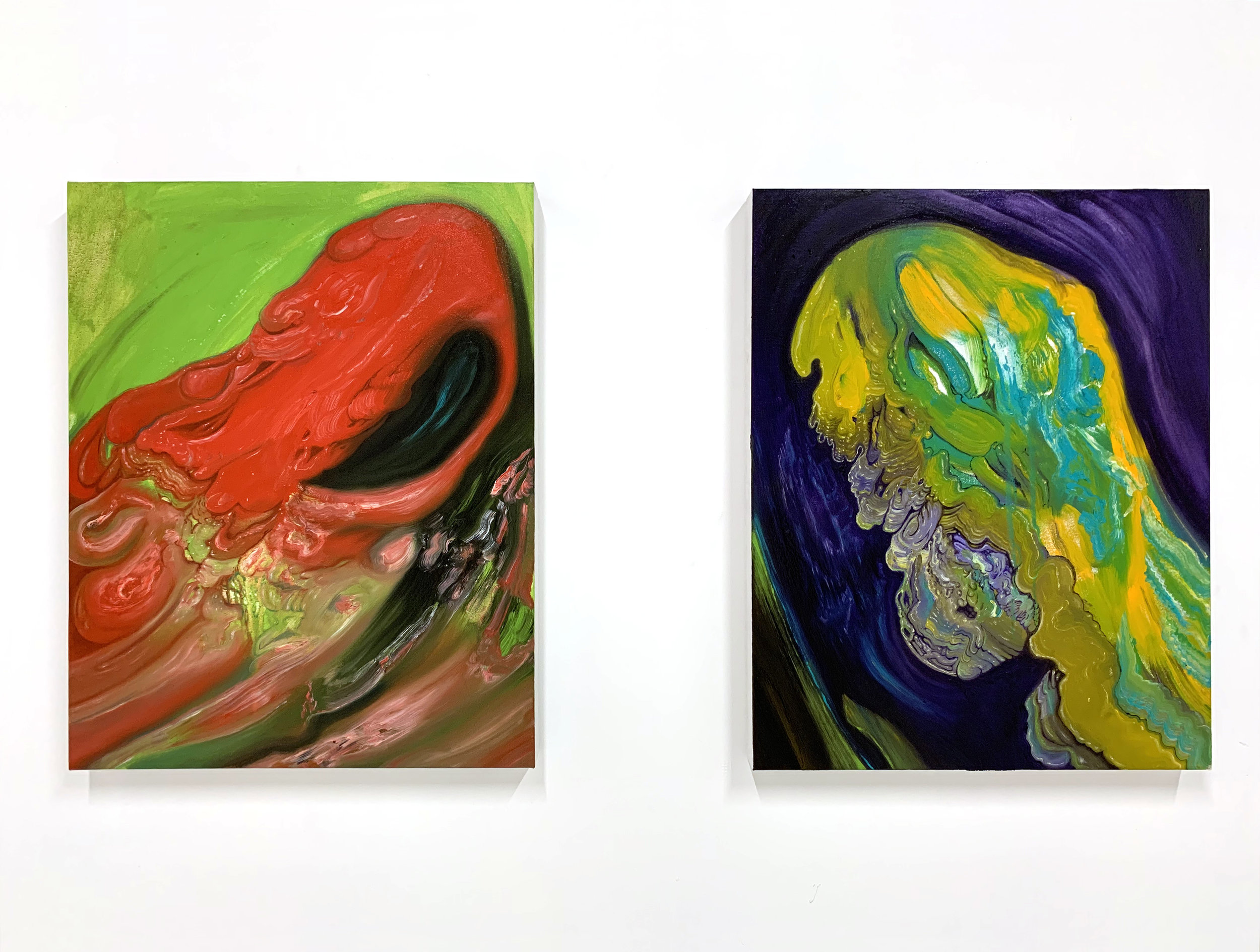


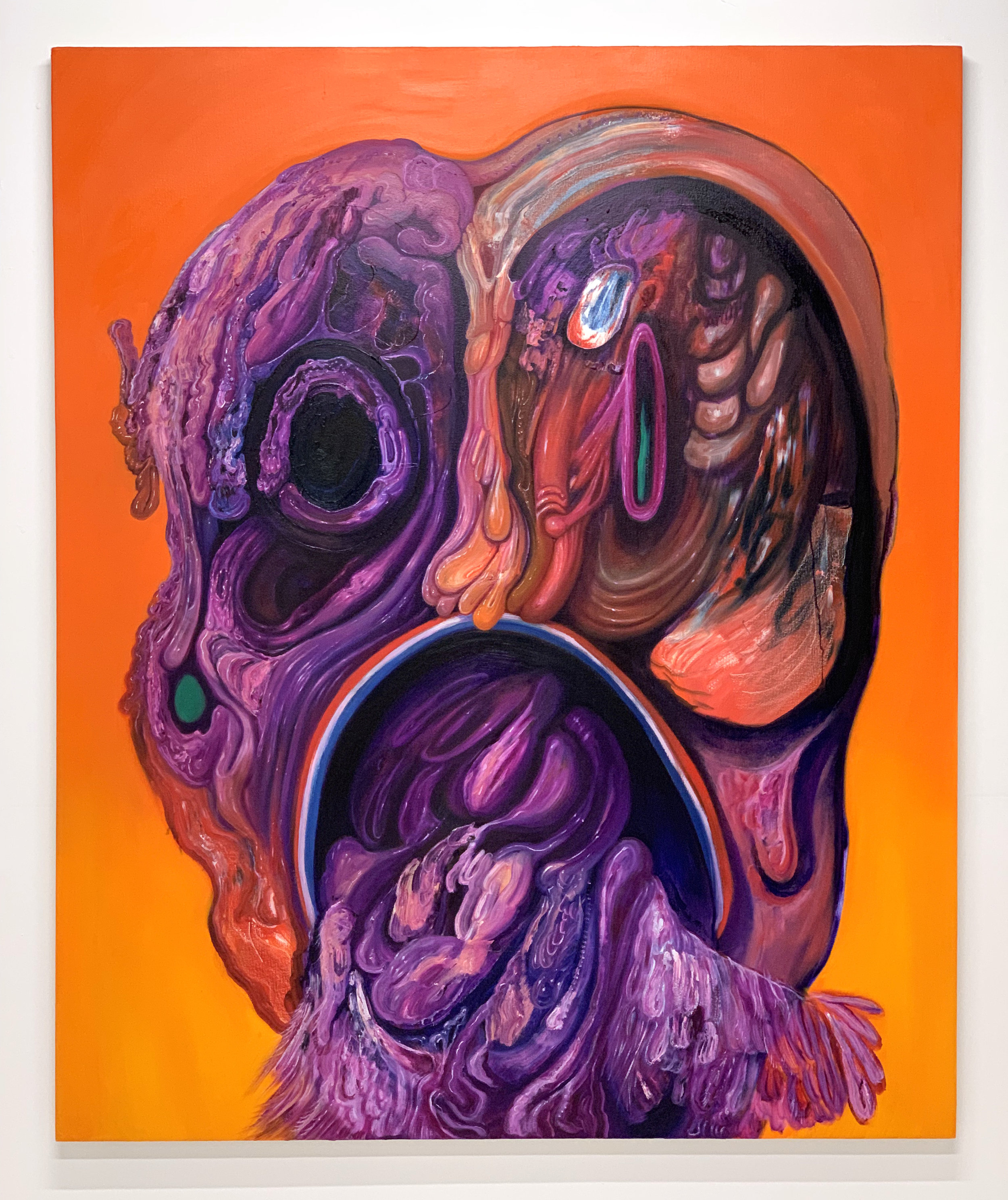

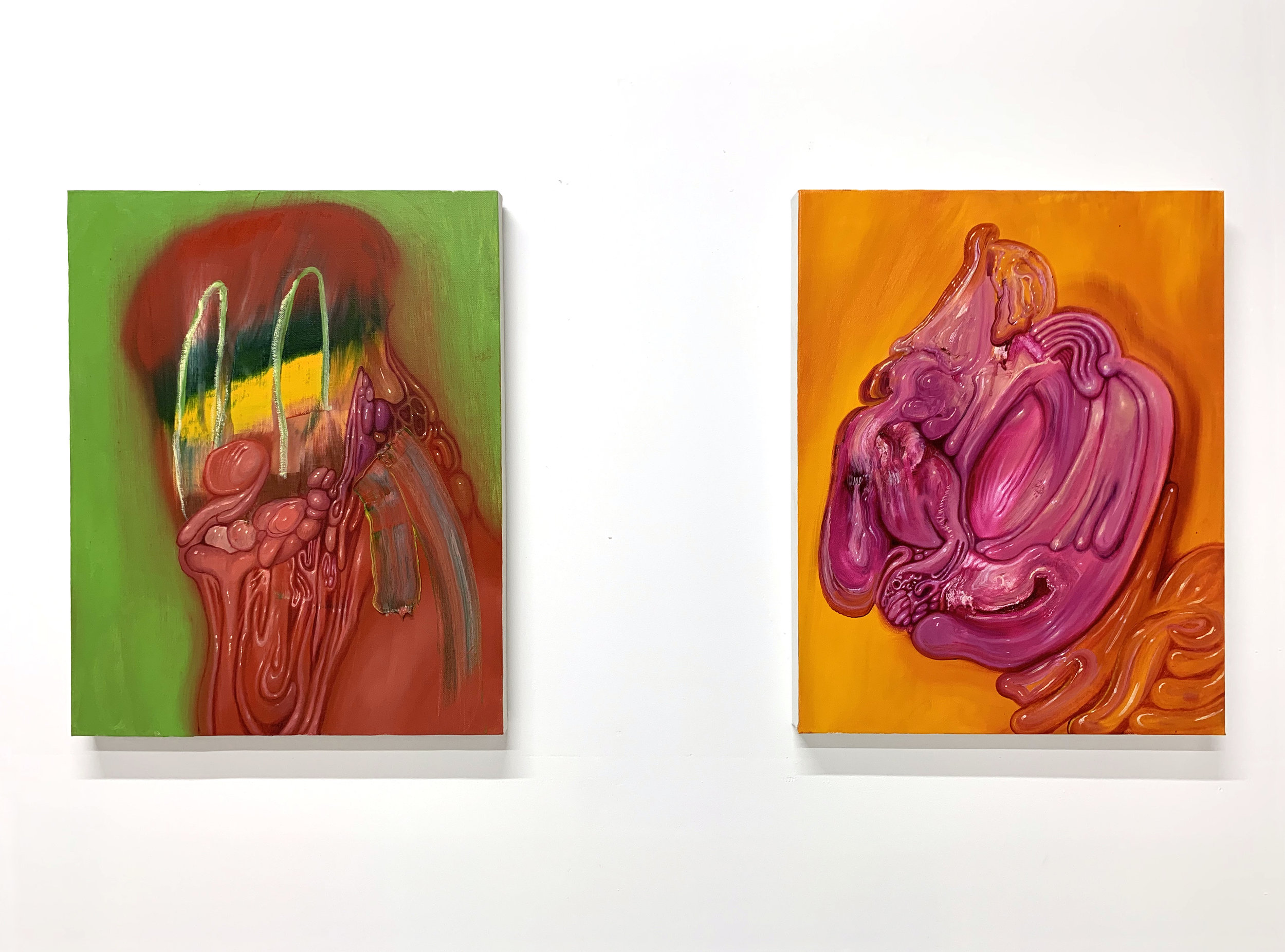
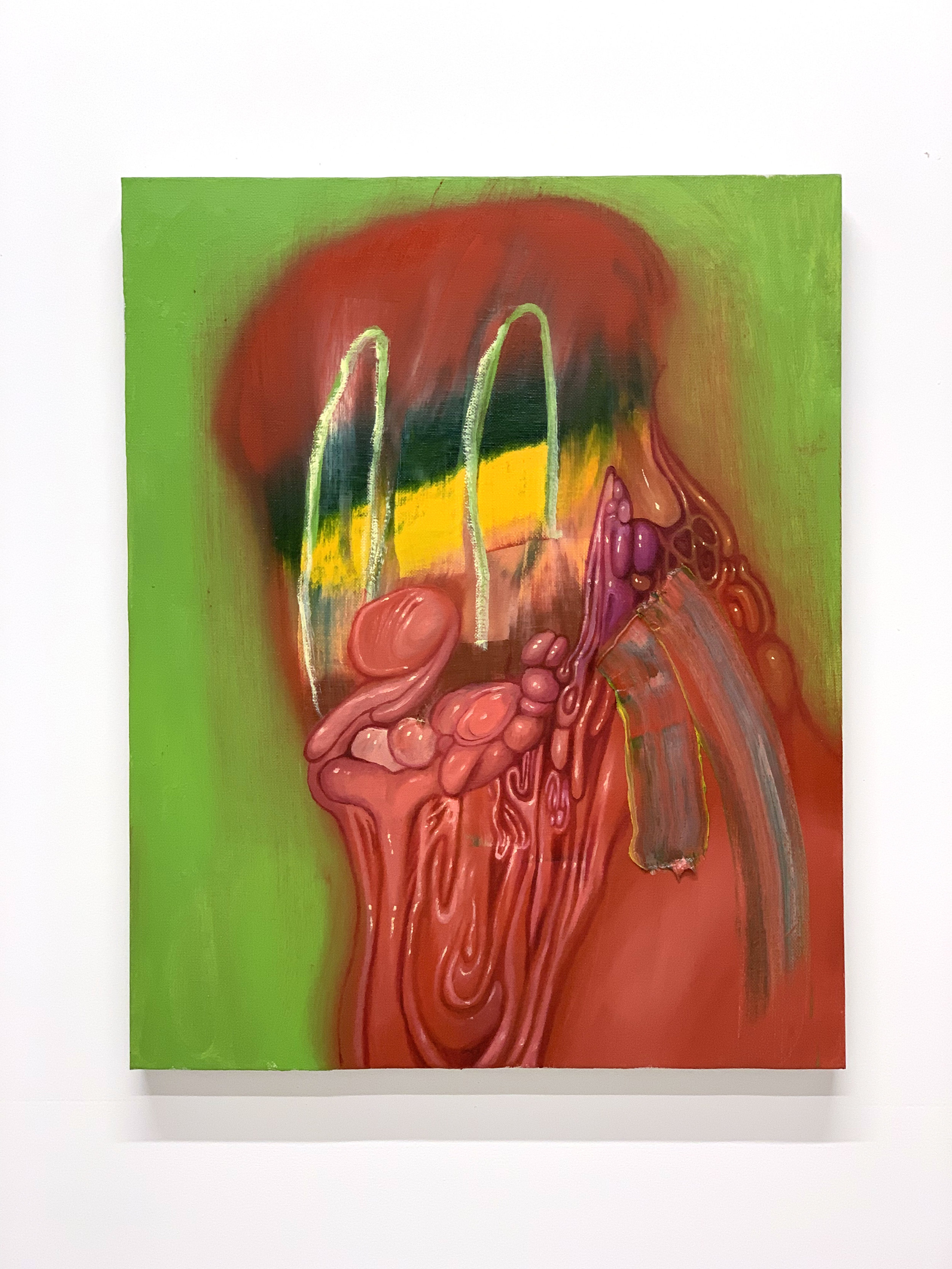
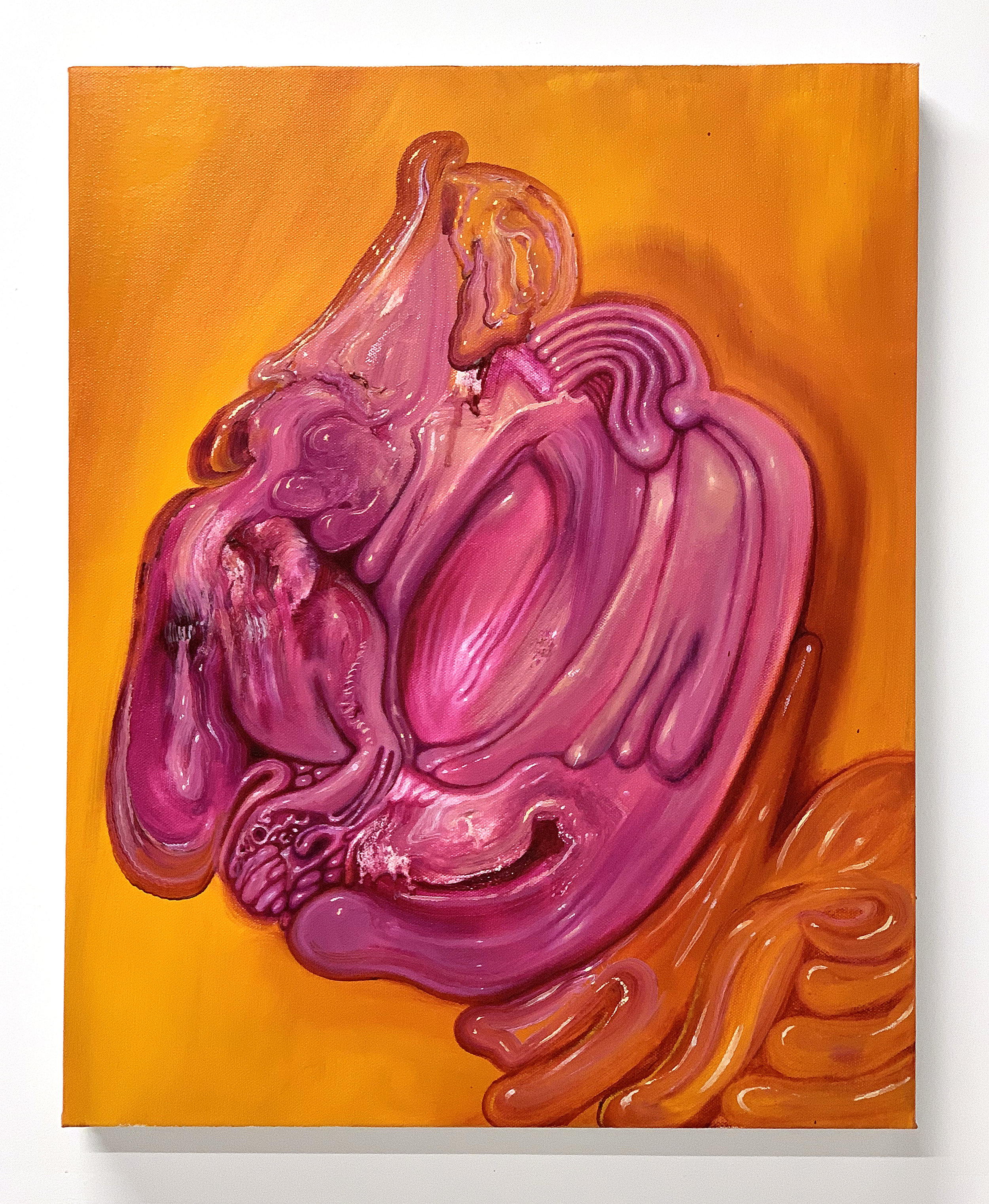
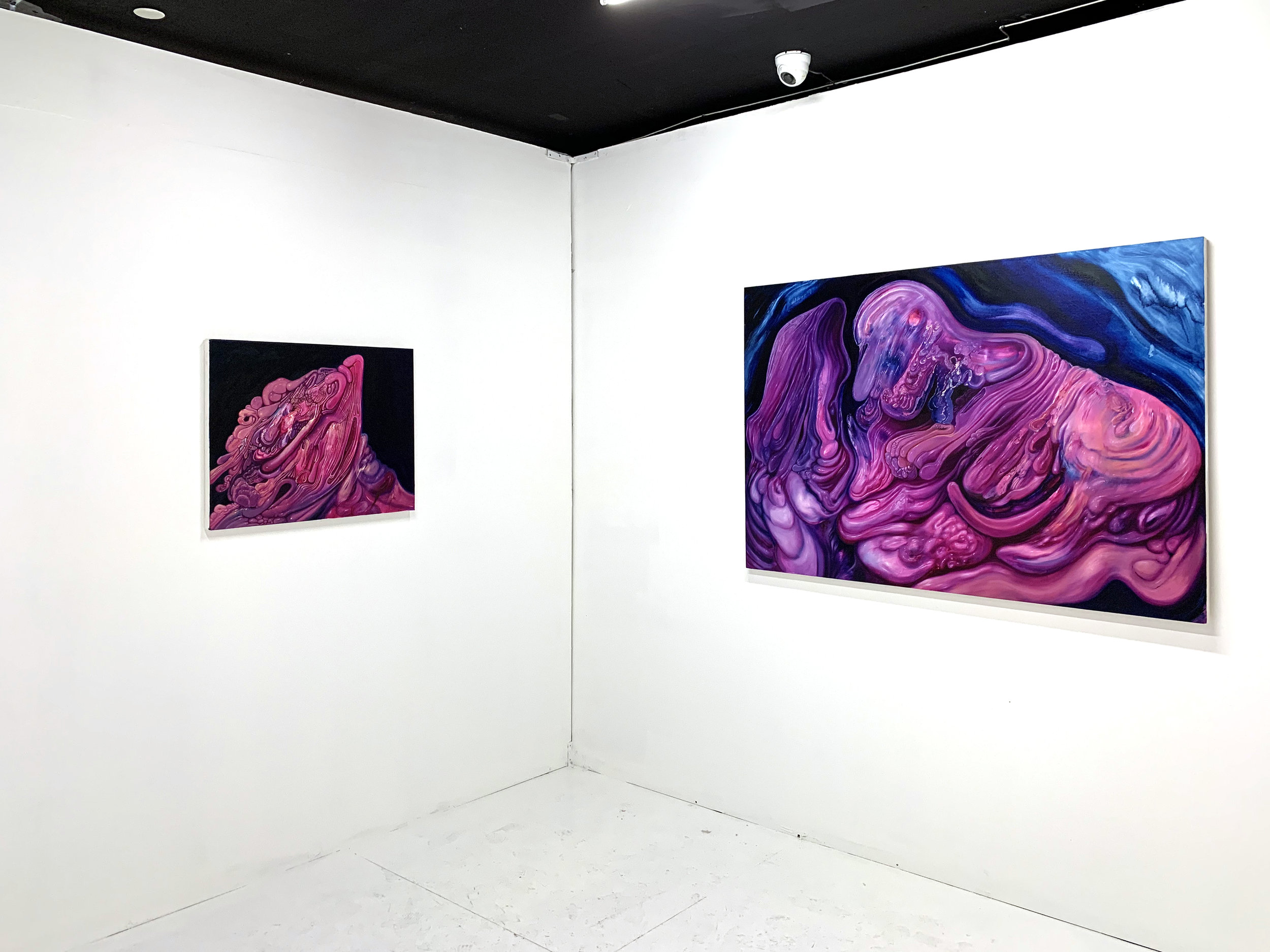
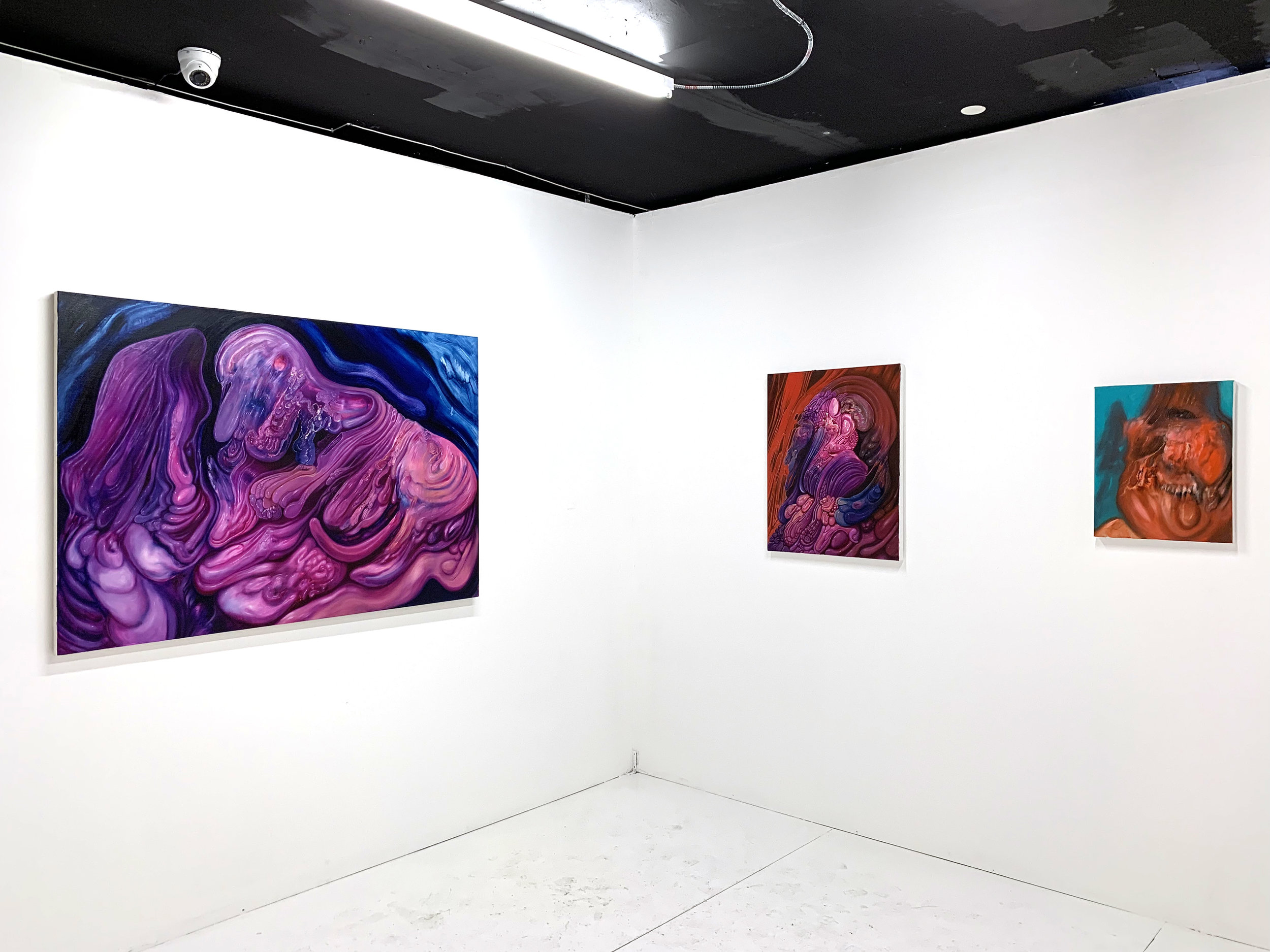
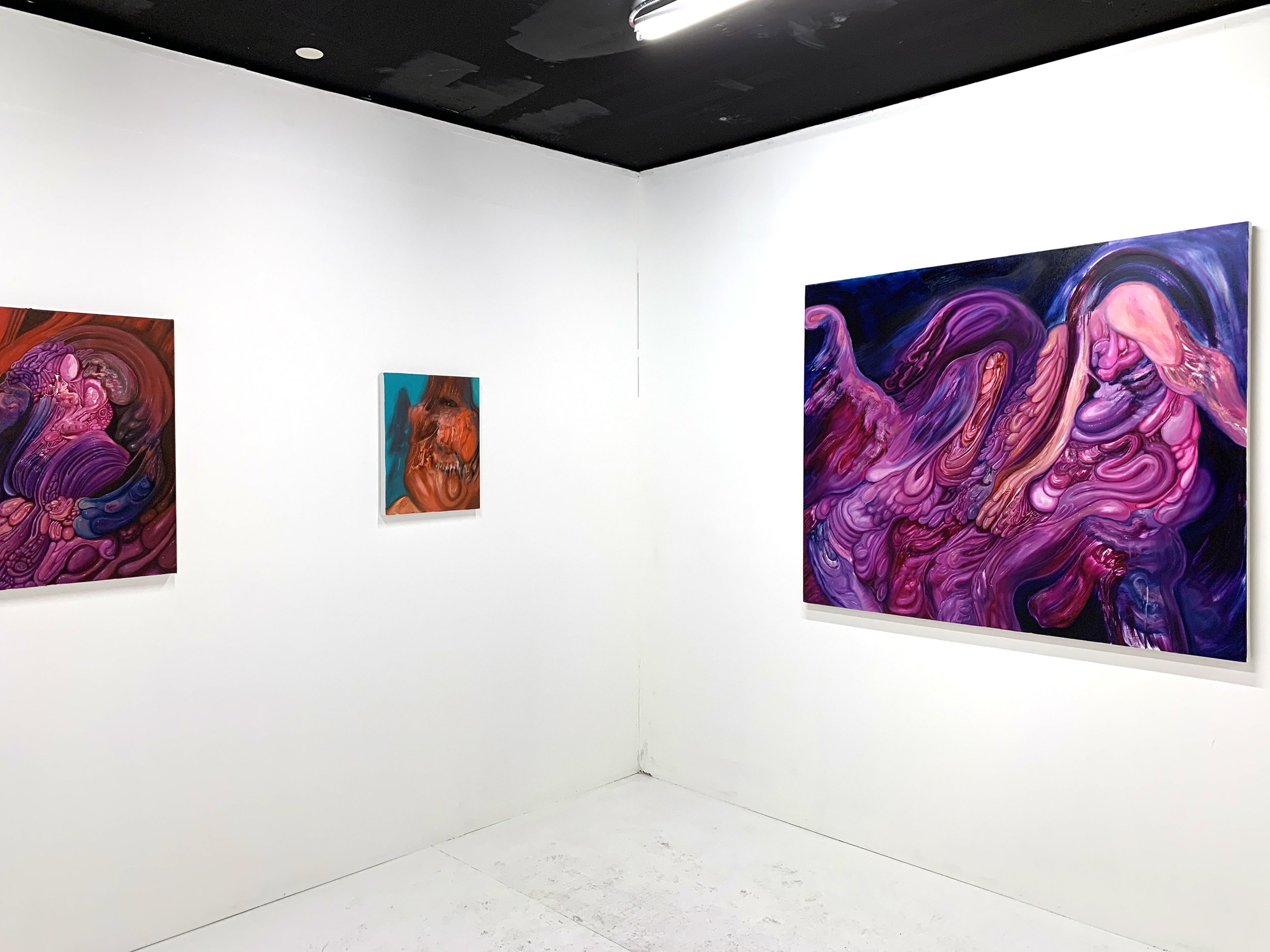
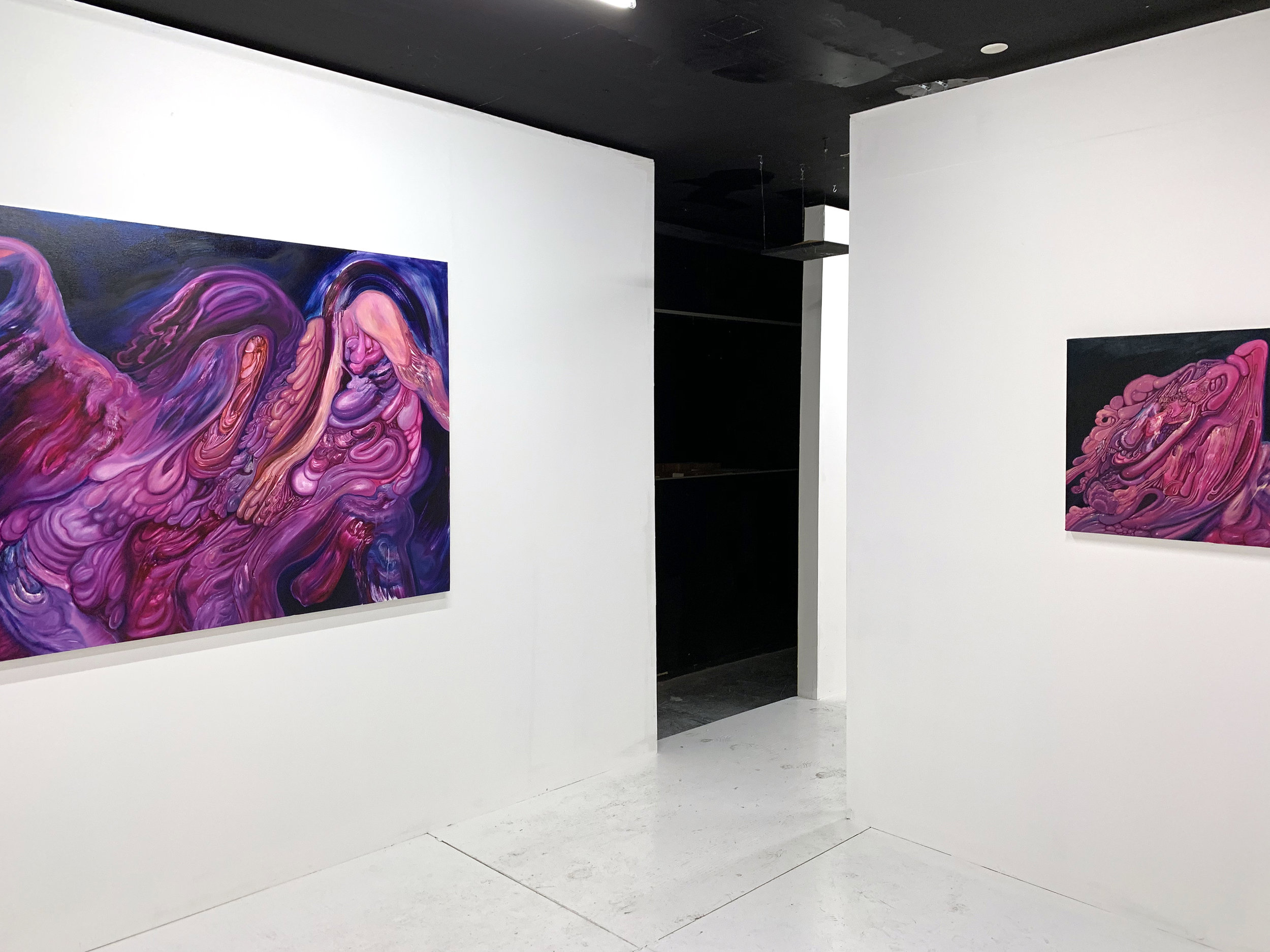

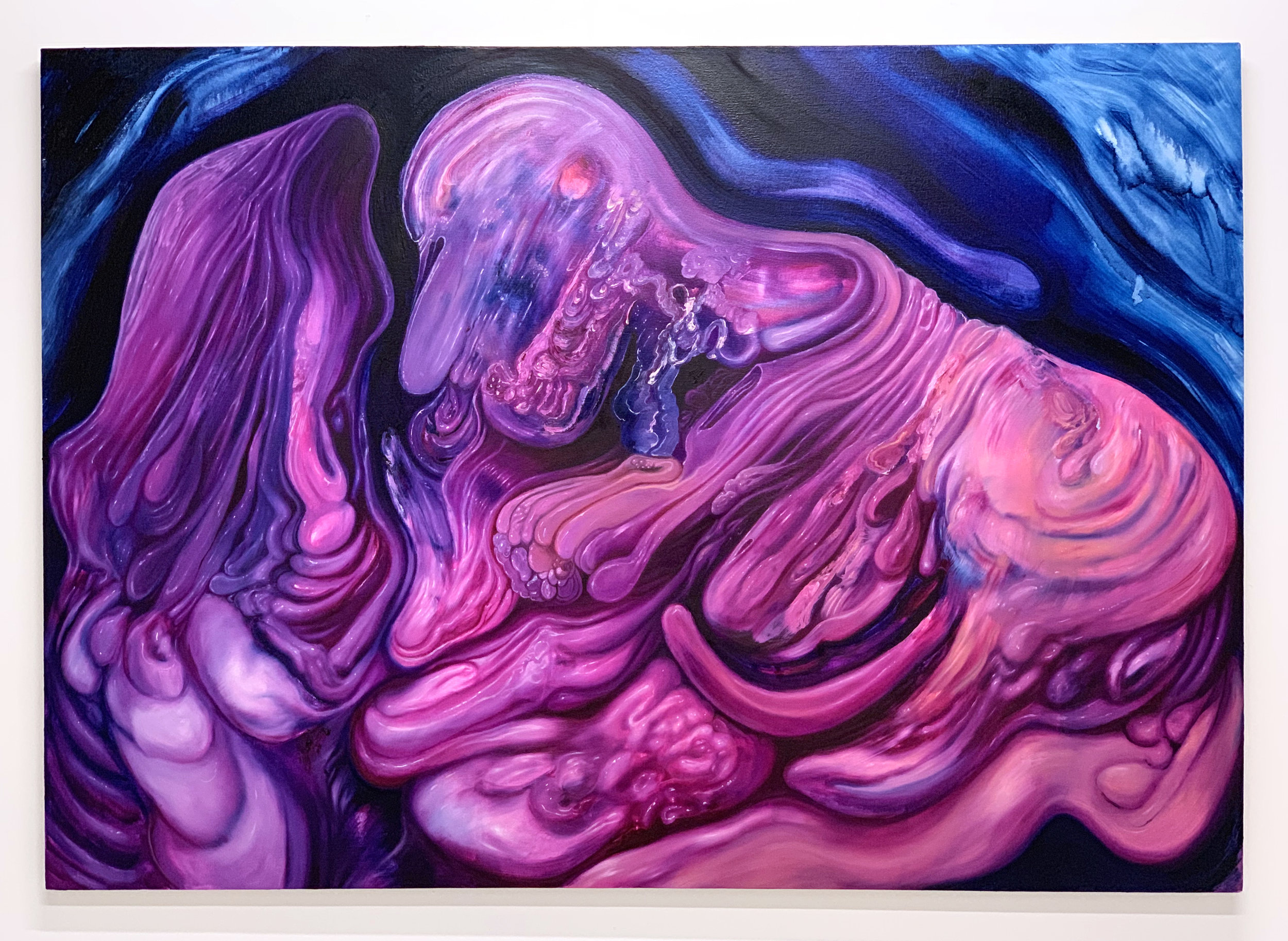

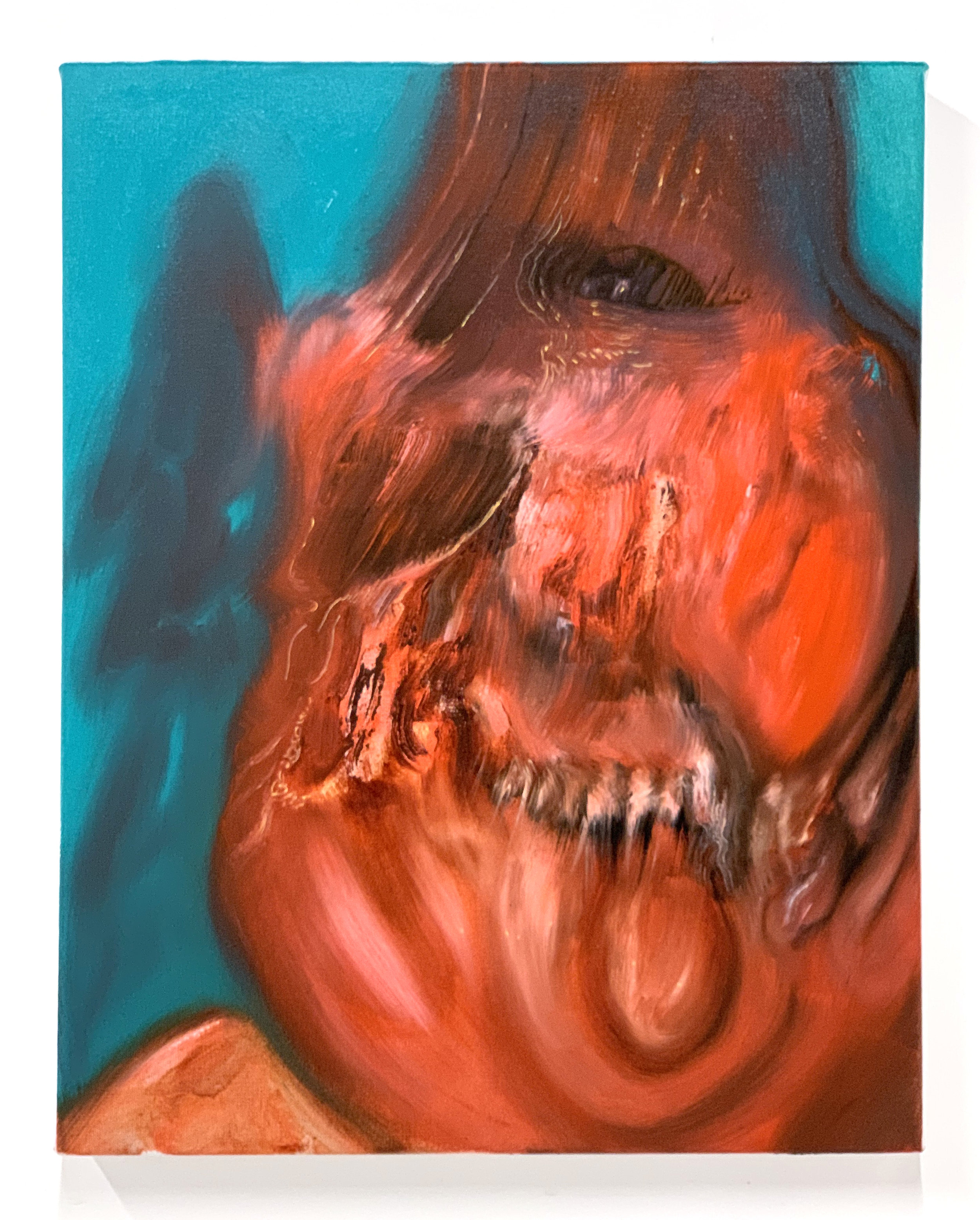
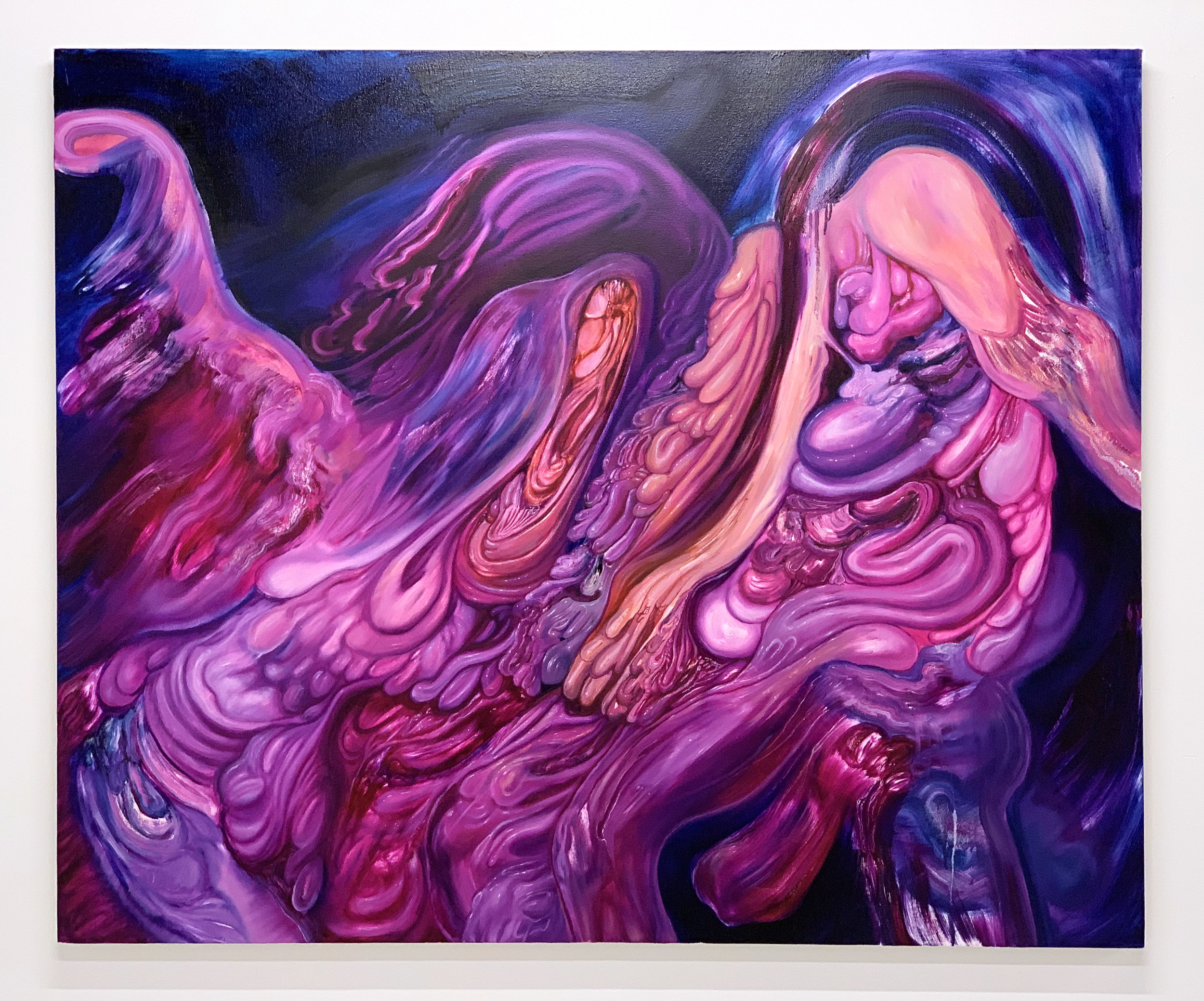
A painter to the core, Gerald Collings is an artist who is comfortable with the uncomfortable. His ongoing struggle to penetrate ever deeper into his own creative psyche, is expressed with paintings steeped in arthistorical reference, with influences ranging from the paintings of Francis Bacon and Chaim Soutine, to the pages of Death Metal comics.
The power of Collings' work lies not only in its incandescent, tortuous style, but also in its graphic expression of feelings with which the artist genuinely seems to grapple. The personal urgency of the work is wracked with anxiety, uncertainty and what could best be described as comic psychosis.
Collings' paintings are a crucible of figuration, abstraction and cartooning, which are rendered inseparable. On occasion, they feature entangled bubblegum pink figures with scars that cannot be seen. In others, flowing curves in the background seem like a subjective linear fusion imposed upon nature. Unified into a totality of organic suggestion, figures on the frontal plane are being held at bay by the swell of the curves. The absorption of humanity, into that totality, liquidating the individual.
The unexpected juxtapositions of the paintings are realized in a panoply of inexplicable, unfamiliar shapes. The shape in The Eyes Have It, is one of those that are harder to identify. It resembles some strange combination of human, animal and vegetable forms. The feeling is one of inextricable entanglement.
In Lynching (Red), there are more recognizable elements, but they seem to ask less to be understood than to be felt.
In Couple, the curves of the sky match the curves of the entities. What looks like a depiction of continuous transformation, also has the suggestion of genitals and entwined undulations, something which is echoed in some of the artist's other images.
Vampire & the Mermaid shows a linked chain of viscera, forming a loop whose ends are infinite. In this never-ending cycle, of birth and rebirth, each twisted shape seems on the brink of changing into its neighbor, or something else entirely. It is as if Freddie Krueger became a balloon bender, who creates mythological figures with a psychosexual subconscious spillover.
Some of the artist's portraits depict faces assembled out of intestinal matter, while in False Gods, the nightmarish subject seems to have become distorted by the subjectivized flow of nature. It could be interpreted as the creature's agony, of the obliteration of its personality by a unifying force. Although depersonalized and crushed into sexlessness, it nevertheless seems to delight in ridiculing the world that imposed this radical distortion.
Lust is rendered in vivid acidic colors that burn with brightness, while Madeline is pictured against a black sky. Unsettlingly voluptuous and seemingly self-devouring, Madeline somehow remains self-contained. As if there is an end to her madness.
Through the Eyes of a Stranger's twisted, cartoon ish imagery suggests a newly minted being. Its head filled with what appears to be a collection of vitals combined with an entanglement of human genitalia.
Collings delivers social commentary with maniacal glee. His highly ambiguous social dramedies are characterized through cartoon mayhem and hilarious brutality. The graphic intensity of the work is cut by the artist's unique blend of social narrative and catastrophic comedy.
Ultimately, Gerald Collings' paintings are meant to be experienced in tile same fevered , visionary spirit in which they were created. His biotope is both an open-ended mystery and a claustrophobic place of secrets, which exists through both the artist's and the viewer's imaginations. It is a place where darkness too, has substance.
Gerald Collings was born in 1974 in Tampa, Florida. He lives and works in New York. His work has been exhibited at museums such as the HISK in Ghent, Belgium, the Contemporary Art Museum in Tampa, Florida and in galleries in New York, Belgium. Mexico and Paris. The artist's first monograph was published in November, 2016